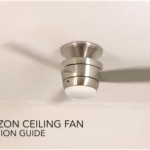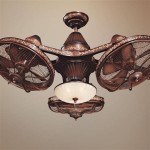Ceiling Fan Oil and the Surprisingly Relevant Italian Dressing Recipe
The seemingly disparate topics of ceiling fan oil and Italian dressing might appear unrelated at first glance. However, understanding the principles behind lubrication and emulsification, concepts central to both, sheds light on the importance of proper maintenance and the science of combining ingredients for a desired outcome. This article will explore the need for oiling ceiling fans, the types of oil suitable for the task, and then, surprisingly, draw a parallel with the emulsification process involved in creating a delicious Italian dressing. The goal is to demonstrate how understanding fundamental scientific principles can be applied in diverse, everyday situations.
Ceiling fans, despite their relatively simple design, rely on a motor to convert electrical energy into mechanical rotation. This motor contains moving parts, specifically bearings, which are designed to minimize friction between the rotating shaft and the stationary housing of the motor. Over time, the lubricant that facilitates smooth operation within these bearings degrades or dissipates. This degradation leads to increased friction, which in turn causes the motor to work harder, generate more heat, and ultimately, wear out faster. A telltale sign of insufficient lubrication is often a noisy operation, frequently manifested as a humming, rattling, or grinding sound emanating from the fan motor.
Ignoring these warning signs can lead to premature failure of the ceiling fan. Repairing a ceiling fan motor can be costly, and in many cases, replacing the entire fan is more economical. Therefore, preventative maintenance, specifically the periodic application of the correct type of oil to the motor bearings, is a crucial step in extending the lifespan of the appliance. This maintenance ensures smooth operation, reduces energy consumption, and prevents costly repairs or replacements.
The Importance of Oiling Your Ceiling Fan
The purpose of oiling a ceiling fan is to reduce friction within the motor's bearings. Bearings are designed to allow smooth rotational movement, but they require lubrication to function optimally. Without adequate lubrication, the surfaces of the bearing components rub against each other, causing friction. This friction generates heat and wear, significantly reducing the bearing's lifespan and the overall efficiency of the fan motor.
Regular oiling not only prolongs the life of the fan, but also improves its performance. A well-lubricated fan operates more quietly and efficiently, consuming less electricity. This translates to lower energy bills and a more comfortable living environment. Furthermore, a smoothly operating fan distributes air more effectively, maximizing its cooling potential during warmer months and its heat circulation capability during cooler months when operated in reverse.
Identifying when a ceiling fan needs oiling is generally straightforward. Common indicators include unusual noises, such as squeaking, grinding, or humming, coming from the motor. Another sign is a noticeable decrease in the fan's speed, even when set to the highest setting. Finally, if the fan motor feels excessively hot to the touch, it could indicate that the bearings are experiencing excessive friction due to lack of lubrication. Addressing these issues promptly with the appropriate oil can prevent further damage and maintain optimal fan performance.
Selecting the Correct Type of Oil for Ceiling Fans
Choosing the right type of oil for a ceiling fan is critical. Not all oils are created equal, and using the wrong type can actually do more harm than good. The ideal oil for a ceiling fan is typically a lightweight, non-detergent oil specifically designed for electric motors. These oils are formulated to provide excellent lubrication without causing corrosion or damage to the delicate components within the motor.
Specifically, a "non-detergent" oil is crucial. Detergent oils are formulated with additives designed to suspend contaminants and keep them circulating within the engine of a car, preventing them from settling and causing sludge buildup. However, in a ceiling fan motor, these detergents can actually loosen existing grime and debris, potentially clogging the bearings and hindering their performance. Non-detergent oils, on the other hand, provide lubrication without the risk of dislodging harmful particles.
Many ceiling fan manufacturers recommend using a turbine oil or electric motor oil with a viscosity grade of ISO 22 or ISO 32. These oils are readily available at hardware stores and online retailers. Avoid using household oils like WD-40 or sewing machine oil, as these are often too thin and may not provide adequate long-term lubrication. Always consult the manufacturer's instructions or owner's manual for specific oil recommendations for your particular ceiling fan model.
The application process is equally important. Typically, ceiling fans have oil ports located on top of the motor housing. These ports are often covered with rubber plugs. After removing the plugs, carefully apply a few drops of oil into each port, avoiding overfilling. Allow the oil to penetrate the bearings for several hours before turning the fan back on. This allows the oil to properly lubricate the moving parts and ensures optimal performance.
The Italian Dressing Analogy: Emulsification and Lasting Effects
While seemingly unrelated, the principles behind oiling a ceiling fan bear a surprising resemblance to the creation of a stable Italian dressing. In both cases, the goal is to achieve a smooth, lasting blend of substances that naturally repel each other. In the case of a ceiling fan, it's about minimizing friction between moving parts; in the case of Italian dressing, it's about creating a homogenous mixture of oil and vinegar that doesn't immediately separate.
Italian dressing, at its core, is an emulsion – a mixture of two or more liquids that are normally immiscible (unmixable). Typically, this involves oil and vinegar (or another acidic liquid like lemon juice). Oil and vinegar naturally separate due to differences in their polarity and density. The oil, being less dense, floats on top of the vinegar. To create a stable Italian dressing, an emulsifier is needed. An emulsifier acts as a bridge between the oil and vinegar, allowing them to mix and remain suspended together for a longer period.
Common emulsifiers used in Italian dressing recipes include mustard, honey, or even finely grated Parmesan cheese. These ingredients contain molecules that have both hydrophobic (water-repelling) and hydrophilic (water-attracting) properties. The hydrophobic end of the emulsifier molecule attaches to the oil, while the hydrophilic end attaches to the vinegar. This dual attachment creates a stable network that prevents the oil and vinegar from separating as quickly.
The effectiveness of the emulsifier depends on several factors, including the type of emulsifier used, the ratio of oil to vinegar, and the method of mixing. Vigorous whisking or blending helps to break down the oil and vinegar into smaller droplets, increasing the surface area for the emulsifier to act upon. A well-emulsified Italian dressing will appear cloudy and homogenous, with the oil and vinegar evenly dispersed throughout the mixture.
The analogy to ceiling fan oil lies in the concept of lasting effectiveness. Just as the correct oil type and application method ensure long-lasting lubrication in a ceiling fan, the right emulsifier and mixing technique are crucial for creating a stable and delicious Italian dressing. Both scenarios highlight the importance of understanding the underlying principles of material interaction to achieve a desired outcome.
Furthermore, just as degraded oil in a ceiling fan leads to increased friction and wear, a poorly emulsified Italian dressing will quickly separate, resulting in an uneven distribution of flavor and texture. The separation forces a constant re-mixing of the ingredients, something that can be avoided with the proper implementation of emulsification techniques. Understanding the role of emulsifiers allows for the creation of a product that maintains its desired characteristics over time, mirroring the functionality of a properly oiled ceiling fan.
Consider the effect of temperature. Just as extreme temperatures can affect the viscosity of ceiling fan oil, making it less effective, temperature can also influence the stability of an Italian dressing emulsion. Cold temperatures can cause the oil to solidify or become more viscous, hindering the emulsification process. Similarly, high temperatures can cause the emulsifier to break down, leading to separation. Therefore, both ceiling fan oil and Italian dressing require careful consideration of environmental factors to maintain their optimal performance.
In conclusion, while seemingly unrelated on the surface, the principles governing the proper maintenance of a ceiling fan and the creation of a stable Italian dressing share a common thread. Both rely on understanding the interaction of materials and the importance of maintaining a desired state – smooth operation in the case of the fan, and homogenous mixture in the case of the dressing. The key to success in both scenarios lies in selecting the right materials and applying the correct techniques to achieve a lasting and effective result. In this case, that result is a smoothly running ceiling fan and a tasty, well-blended salad dressing

Homemade Italian Dressing Recipe

Classic Italian Dressing Espresso And Lime

Homemade Italian Dressing Recipe

Healthy Italian Salad Dressing Skinny Fitalicious

Homemade Italian Dressing

Homemade Italian Dressing

The Best Ever Classic Italian Salad Dressing

Homemade Italian Dressing Recipe Chef Billy Parisi

Easy Homemade Italian Dressing

Best Homemade Italian Dressing
Related Posts








